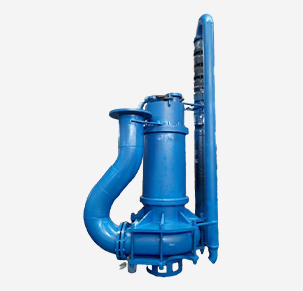English
- Afrikaans
- Albanian
- Amharic
- Arabic
- Armenian
- Azerbaijani
- Basque
- Belarusian
- Bengali
- Bosnian
- Bulgarian
- Catalan
- Cebuano
- Corsican
- Croatian
- Czech
- Danish
- Dutch
- English
- Esperanto
- Estonian
- Finnish
- French
- Frisian
- Galician
- Georgian
- German
- Greek
- Gujarati
- Haitian Creole
- hausa
- hawaiian
- Hebrew
- Hindi
- Miao
- Hungarian
- Icelandic
- igbo
- Indonesian
- irish
- Italian
- Japanese
- Javanese
- Kannada
- kazakh
- Khmer
- Rwandese
- Korean
- Kurdish
- Kyrgyz
- Lao
- Latin
- Latvian
- Lithuanian
- Luxembourgish
- Macedonian
- Malgashi
- Malay
- Malayalam
- Maltese
- Maori
- Marathi
- Mongolian
- Myanmar
- Nepali
- Norwegian
- Norwegian
- Occitan
- Pashto
- Persian
- Polish
- Portuguese
- Punjabi
- Romanian
- Russian
- Samoan
- Scottish Gaelic
- Serbian
- Sesotho
- Shona
- Sindhi
- Sinhala
- Slovak
- Slovenian
- Somali
- Spanish
- Sundanese
- Swahili
- Swedish
- Tagalog
- Tajik
- Tamil
- Tatar
- Telugu
- Thai
- Turkish
- Turkmen
- Ukrainian
- Urdu
- Uighur
- Uzbek
- Vietnamese
- Welsh
- Bantu
- Yiddish
- Yoruba
- Zulu
Telephone: +86 13120555503
Email: frank@cypump.com
Nov . 19, 2024 21:47 Back to list
Differences Between Effluent Pumps and Sump Pumps in Wastewater Management
Effluent Pump vs. Sump Pump Understanding the Differences and Applications
When it comes to managing wastewater in residential and commercial settings, two common types of pumps are often discussed effluent pumps and sump pumps. While they may seem similar at first glance, they serve distinct purposes and are designed for different applications. Understanding these differences is vital for choosing the right pump for your needs.
What is an Effluent Pump?
An effluent pump is specifically designed to move liquid waste, particularly effluent from septic systems or other wastewater applications. Effluent is the fluid that exits a septic tank after the solids have settled and been broken down by bacteria. Effluent pumps are typically used to transfer this wastewater to drainage fields or to other treatment systems. They can handle solids up to a certain size, usually around ½ inch, making them more robust than standard utility pumps.
Effluent pumps operate automatically, activated by float switches that detect the water level in the tank. Once the water reaches a certain level, the switch triggers the pump to start working, efficiently transporting the liquid waste away from the area. Because they are designed for continuous use and can handle higher pressures and heads, effluent pumps are usually more powerful and capable than sump pumps.
What is a Sump Pump?
On the other hand, a sump pump's primary function is to remove excess water from basements or crawl spaces, where it has the potential to cause flooding. Sump pumps are installed in a pit, known as a sump basin, which collects water that seeps into the basement or area. When the water level rises, the sump pump activates, pumping the water out and away from the foundation of the building.
Sump pumps are generally not designed for handling solid waste, although some models can manage very fine particulate matter. They are built for lighter-duty applications, primarily focused on managing clean or mildly contaminated water. While there are sump pumps capable of handling more substantial flow rates, their primary purpose remains water removal rather than wastewater management.
effluent pump vs sump pump

Key Differences
1. Application The most significant difference is their intended use. Effluent pumps are designed for disposing of wastewater, especially from septic systems, while sump pumps are for general water removal, particularly in areas prone to flooding.
2. Material Handling Effluent pumps can handle small solids, making them suitable for liquid waste; sump pumps, however, are usually limited to pumping clean or slightly dirty water without significant debris.
3. Installation Effluent pumps are often used in a septic system setup that involves a dedicated tank, while sump pumps are more common in basements, installed in sump pits.
4. Power and Pressure Effluent pumps are generally more powerful, capable of overcoming higher static heads, while sump pumps typically operate at lower pressure levels and flow.
Choosing the Right Pump
When selecting a pump for your needs, consider the type of water you'll be dealing with, the volume of water that needs to be pumped, and the specific location. If you're dealing with effluent or wastewater from a septic system, an effluent pump is essential. Conversely, if you're looking to preventor address flooding in a basement, a sump pump is your best choice.
In conclusion, while effluent pumps and sump pumps may both be crucial components of a water management system, they are tailored to different needs. Understanding the function and proper usage of each type will ensure that your home or business remains free from the issues associated with excess water or wastewater, leading to a safer and more efficient environment. Whether you invest in an effluent pump or a sump pump, the right choice will depend on the unique challenges you face in managing your water systems.
-
ISG Series Vertical Pipeline Pump - Chi Yuan Pumps Co., LTD.|Advanced Hydraulic Design&Energy-Efficient Solutions
NewsJul.30,2025
-
ISG Series Vertical Pipeline Pump - Chi Yuan Pumps Co., LTD.
NewsJul.30,2025
-
ISG Series Vertical Pipeline Pump - Chi Yuan Pumps Co., LTD.|energy-efficient fluid handling&industrial durability
NewsJul.30,2025
-
ISG Series Vertical Pipeline Pump - Chi Yuan Pumps | Advanced Engineering&Industrial Efficiency
NewsJul.30,2025
-
ISG Series Pipeline Pump - Chi Yuan Pumps | High Efficiency, Energy Saving
NewsJul.30,2025
-
ISG Series Vertical Pipeline Pump-Chi Yuan Pumps|High Efficiency&Reliable Performance
NewsJul.29,2025










